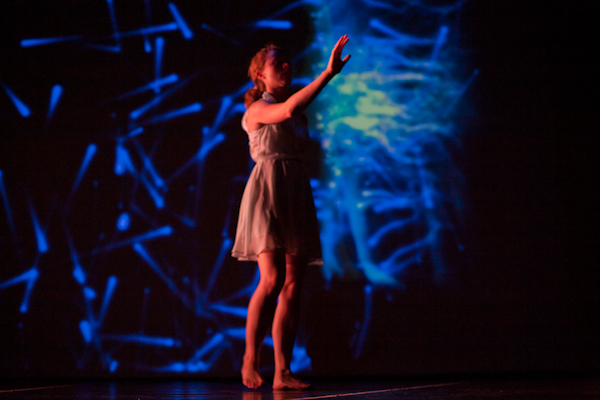A 'blob' is defined as the region of a digital image in which some properties are constant or vary
within a prescribed range of values; all the points in a blob can be
considered in some sense to be similar to each other. Blob detection, or tracking, is the computer's method of distinguishing the variance in color, form, texture, etc. from the background or other forms of a design. According to some internet resources, there are two main classes of blob detectors: (i)
differential methods, which are based on derivatives of the function with respect to position, and (ii)
methods based on local extrema, which are based on finding the local maxima and minima of the function.
Likewise, a particle system refers to a computer graphics technique that uses a large number of very small sprites
or other graphic objects to simulate certain kinds of "fuzzy"
phenomena, which are otherwise very hard to reproduce with conventional
rendering techniques - usually highly chaotic systems, natural phenomena, and/or processes caused by chemical reactions.
Particle systems and blob tracking are important to this class because they allow us to manipulate existing programming in order to create special effects to our shows such as 'fairy dust,' snow, fire, etc. And when used on a screen as large as the one in the REVE, you can come up with some really cool designs!
Motion tracking s the process of locating a moving object (or multiple objects) over time using a camera. It has a variety
of uses, some of which are: human-computer interaction, security and
surveillance, video communication and compression, augmented reality, traffic control, medical imaging
and video editing. Video tracking can be a time consuming process due to the amount of
data that is contained in video. Adding further to the complexity is the
possible need to use object recognition techniques for tracking, a challenging problem in its own right.
Motion tracking offers several advantages over computer animation:
- More rapid, even real time results can be obtained.
- The amount of work does not vary with the complexity or length of
the performance to the same degree as when using traditional techniques.
This allows many tests to be done with different styles or deliveries,
giving a different personality only limited by the talent of the actor.
- Complex movement and realistic physical interactions such as
secondary motions, weight and exchange of forces can be easily recreated
in a physically accurate manner.
- The amount of animation data that can be produced within a given
time is extremely large when compared to traditional animation
techniques. This contributes to both cost effectiveness and meeting
production deadlines.
- Potential for free software and third party solutions reducing its costs.
There are also some disadvantages:
- Specific hardware and special software programs are required to obtain and process the data.
- The cost of the software, equipment and personnel required can be prohibitive for small productions.
- The capture system may have specific requirements for the space it
is operated in, depending on camera field of view or magnetic
distortion.
- When problems occur, it is easier to reshoot the scene rather than
trying to manipulate the data. Only a few systems allow real time
viewing of the data to decide if the take needs to be redone.
For this project, since Isadora allows us to have a Video-In-Watcher, and also considering that a lot of us may not yet know how to model characters in Maya, we can perform simple types of motion tracking and can use that in our show
 Fusing 3d imaging and rigorous molecular physics, dS transforms people into energy fields and lets them wander through the nano-quantum world, where they trigger sounds and images. There’s no limit on the number of “players”, and the more they cooperate, the more engrossing it becomes. Learn more about the science of dS
Fusing 3d imaging and rigorous molecular physics, dS transforms people into energy fields and lets them wander through the nano-quantum world, where they trigger sounds and images. There’s no limit on the number of “players”, and the more they cooperate, the more engrossing it becomes. Learn more about the science of dS